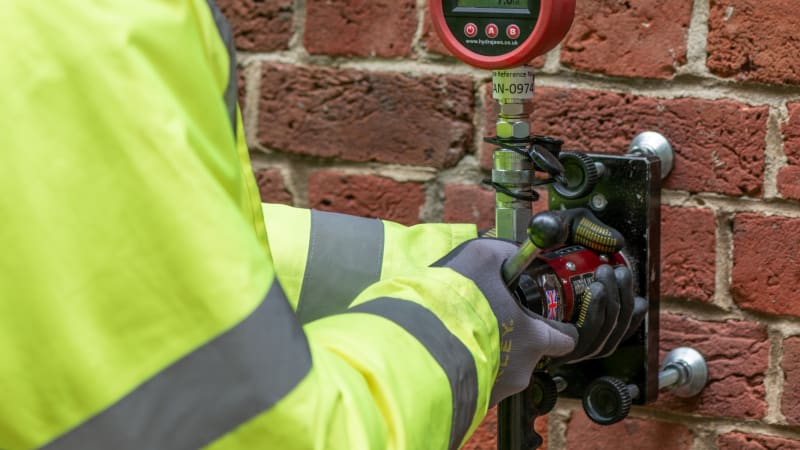
What is the difference between pull testing and proof testing?
- Read time: 0.5 minutes
- Date: 13 Mar 2024
- Rainscreen & Façades
Pull testing is a generic term that is generally used when referring to on-site preliminary or suitability testing. This type of testing is used to help customers and engineers select the appropriate fastener for their project when supporting performance data for the substrate does not exist. When testing a fastener for suitability, it is normally tested to an ultimate failure load.
Proof testing is only suitable for verifying that the performance of certain types of anchors has been achieved. When proof testing a fastener; it is only tested to a predetermined load, not to failure. This load is supplied by the engineer responsible for fastener specification. The number of anchors to be proof tested depends on the testing and evaluation method.
When carrying out proof testing it is important to ensure the fastener has been installed in line with the manufacturer's instructions, including factors such as minimum edge distances, spacing, etc.
When is on-site preliminary or suitability testing needed?
The following guidance should be used to determine whether on-site preliminary or suitability testing is needed depending on the substrate material:
Masonry and concrete substrates:
When available, always specify a fastener with an ETA (European Technical Assessment)/CE Mark. The ETA approval and manufacturer's datasheet will include the published load values for known substrates, so this data should be used, and site testing will not be required
Site testing should be carried out where the substrate is not known, such as masonry or concrete on a refurbishment project
Steel substrates:
Steel is a consistent material so site testing is not required under any published standards for building envelope installations. It is also worth noting that BS 8539 only provides guidance on the testing of anchors in concrete and masonry, so does not apply to fixing into metal
In all other applications, refer to the fastener's ETA approval and he manufacturer's datasheet to obtain the tensile data for the required thickness of substrate material
How is on-site preliminary or suitability testing carried out?
The examiner will install a sacrificial anchor and attach the test equipment to the anchor. The exact method is dependant on the application and the anchor being tested. Testing should be carried out in accordance with BS 8539 and CFA Guidance Note - Procedure for Site Testing Construction Fixings 2023.

Can I use pull testing data for a different fastener?
No. Results from on-site preliminary or suitability tests are only valid for the exact type of fastener that has been tested. The test results are not transferable to an equivalent product from either the same or another manufacturer because the test cannot account for variations in the fastener material or manufacturing process.
Can proof testing be used for all types of anchors?
No, it's not possible to proof test all anchors. Proof testing is only possible where the pull testing equipment can connect to the anchor. If an anchor needs to be loosened to allow connection of the test equipment, the results are not valid.
If an ETA approved anchor has been used into a known and approved substrate and has been installed by a trained installer under supervision, BS 8539 states that testing is not required.





